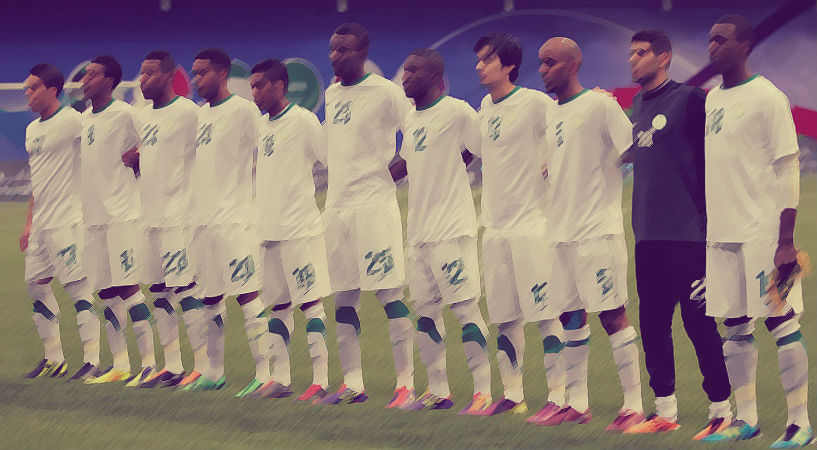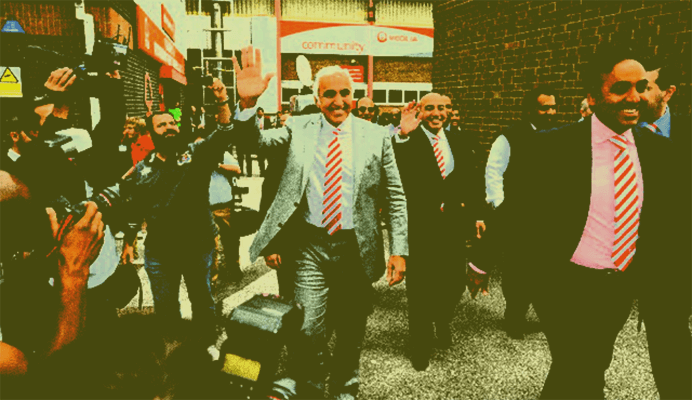Despite the Gulf Cup not recognised by FIFA, the tournament will serve Saudi Arabia’s purpose of improving their recently fluctuating FIFA Rankings. Wael Jabir documents the need for Saudi Arabia to win the Gulf Cup and how the team is tactically set up under manager Lopez Caro.

Saudi Arabia enters the 2014 Gulf Cup sitting 97th in October’s FIFA ranking having dropped 15 places from the previous month following a disappointing 1-1 home draw to 124th ranked Lebanon. A very far cry from the heights of 1994 when a knock-out stage finish at the World Cup saw the team ranked as high as 25th. Disappointment and under-performance have been the name of the game for Saudi Arabia under current manager Lopez Caro, despite the relative improvement demonstrated by a 21 places jump on the FIFA rankings since the Spaniard took over in February 2013. Under Frank Rijkaard, the team had dropped below 100th for the 1st time ever before slumping to an all-time low of 126th in July 2012.
Saudi host the 22nd Arabian Gulf Cup with the pressure to deliver on home soil coupled with an overwhelming sense of frustration rather than hope from fans and pundits alike. This was evidenced by the record low attendance for the opening match when Saudi played out a 1-1 draw with Qatar in front of 20,000 fans at the 65,000 capacity King Fahd stadium in Riyadh despite free entry offered by the Saudi Arabian Federation (SAFF).
Winning the Gulf Cup title is the target set and announced by Coach Caro and the SAFF, but most importantly, the competition will serve as preparation for the 2015 AFC Asian Cup where a good performance will be the one parameter on which the former Real Madrid boss will be judged having been afforded a 2 year period to build the team. Something quite extraordinary for the Saudi Federation given that out of the 4 managers preceding Caro, only Dutchman Frank Rijkaard survived more than 16 days at the helm of “The Green Falcons”.
Stats are not on Caro’s side either. Before the competition, The Saudis have conceded more goals (18) than they have scored (16) under the 51-year-old. A win percentage of 43% is hardly impressive considering the team has only played one competitor in the top 50 FIFA ranked in their 14 matches under the Spaniard (a 1-1 home draw against 7th placed Uruguay last month). The average FIFA ranking of teams they faced in the same period was 97th. The team only played 3 games away (2 wins against Iraq & Indonesia and a draw against China) demonstrating the fact they haven’t made the most of home advantage with their lowest point coming in a 4-0 home defeat to European minnows Moldova having infamously rejected invitations to play the likes of would-be world champions Germany & runner-ups Argentina in fear of a heavy loss that could negatively impact their FIFA ranking.
Numbers tell a dim story for Lopez Caro & his men and anything less than lifting the region’s most coveted trophy in front of their own fans could see the Spaniard leave the kingdom before you could say “Asian Cup”. An opening 1-1 draw against Qatar was by no means a dream start for The Falcons in the midst of continued criticism for Caro’s selections with the absence of veteran full-back Hussein Abdulghani and starting Al-Shabab goalkeeper Waleed Abdullah, the main talking points.
Lopez made a few changes to his starting XI for the 2nd game against Bahrain on Sunday night; a 3-0 win provided a much needed relief putting the side top of Group A with a game to come against Yemen who enjoy massive support from the large Yemeni population of Riyadh and are yet to concede in their opening 2 games.
Striker Nasser Al-Shamrani, recently named in a 3-man shortlist for the AFC Asian Footballer of the year, scored the opener against Bahrain and will have to continue to do so if his side are to have any chance of competing in Australia. Being deployed as the lone forward in Lopez Caro’s 4-5-1 formation, Al-Shamrani carries the burden of following in the footsteps of legends like Majed Abdullah, Sami Al-Jaber and the 2007 Asian Player of the year Yasser Al-Qahtani whom he successfully replaced upfront for club side Al-Hilal.
Saudi Arabia need Gulf Cup triumph more than ever. Despite the competition not being officially recognized by FIFA, the possible run of 5 games in 2 weeks do count as international friendlies and will boost their FIFA ranking as well as confidence ahead of the January 2015 Asian Cup in Australia where more stern tests will face the team. Anything less than lifting the trophy come the 26th of November could effectively mean sacking for manager Lopez Caro and perhaps a new dark age for Saudi Arabian football.
Tactical Set Up
Lopez Caro’s Saudi Arabia side is tactically modelled largely after AFC Champions League finalists Al-Hilal with a core of seven players from the kingdom’s most successful club. A traditional 4-5-1 formation switches into a 4-3-3 during attacking spells with conventional wingers. Veteran Captain Saud Kariri anchors the midfield for both club and country with a more adventurous partner; Lopez Caro doesn’t seem to have settled on a single player to fill that position next to Kariri. Waleed Bakhashwain & Abdulmalik Al-Khaibari have been tried with the former offering more encouraging signs (at 25, he is also 3 years younger).
One area where the national team is being more tactically clever is the use of inverted wingers with Nawaf Al-Abid being afforded license to switch sides with the other left-footed winger Salman Al-Faraj or the Salem Al-Dossary who is comfortable on either flank. Then there is the other untested option of all-attacking wingers Al-Abid & Fahad Al-Muwallad playing together either side of Tayseer Al-Jassim who seems to have locked down the starting spot at the number 10. The problem with an Al-Abid Al-Muwalad partnership would be that they offer very little defensively thus putting more pressure on an already weak full-back position. Defnsively, Saeed Al-Muwallad gets a chance to impress in right wingback in the absence of injured Al-Hilal right-back Al-Shahrani, he is looking more solid defensively albeit not as impressive going forward. Al-Zori continues to blow hot and cold at left-back and the tactically sound Salman Al-Faraj has been utilized there occasionally.
The team is certainly not short of options across the pitch, but the question is whether Lopez Caro be the man who creates the much needed team coherence and gel this talented group of players into a functional unit to deliver the desired results?
Written by Wael Jabir
- Middle East Column: Spitting Al-Shamrani, Suarez of Arabia? - December 3, 2014
- Middle East Football Column: Sami Al-Jaber, greatest of all time? - November 26, 2014
- Why Saudi Arabia need to win the 2014 Gulf Cup - November 19, 2014























































